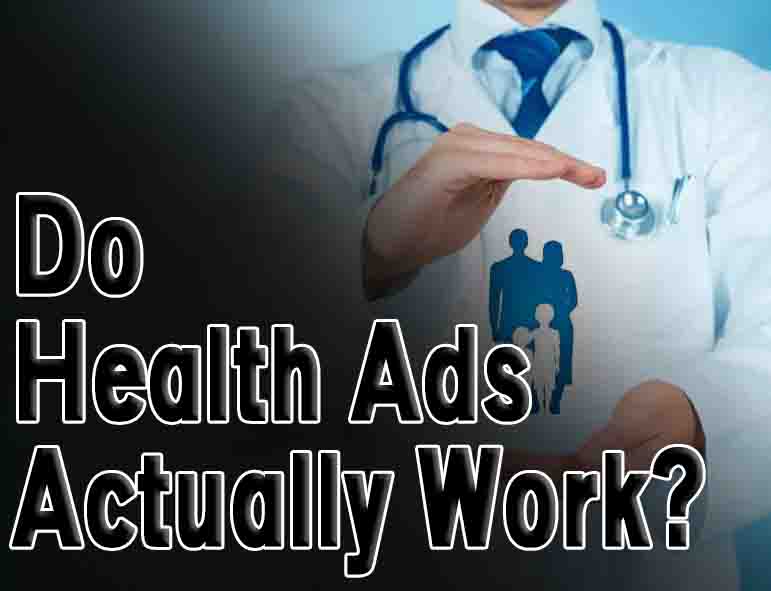Health ads are designed to sell a product or service by appealing to our health concerns. But do they actually work? A new study suggests that health ads may not be as effective as we think. The study found that people who saw a health ad were no more likely to change their behavior than those who didn’t see the ad. So, why are we still seeing so many health ads?
Table of Contents
Do health ads actually work?
In a world where we are constantly bombarded with advertising, it can be hard to decipher what is actually effective and what is not. When it comes to health ads, do they actually work in getting people to lead healthier lifestyles?
There is no doubt that health ads have an impact on viewers. Whether it is a commercial for a new gym membership or a public service announcement about the dangers of smoking, these ads can grab our attention and make us think about our own health habits.
However, simply watching a health ad is not enough to change our behavior. In order for these ads to be truly effective, they need to be part of a larger campaign that includes education and support. For example, an ad campaign that encourages people to quit smoking will be more successful if it also provides resources like quitting hotlines and counseling services.
The history of health advertising
In the early days of health advertising, ad creator relied on simple messages and visuals to get their point across. This worked well enough when the products being advertised were relatively straightforward and the audience was small. As the field of health care grew more complex, however, and the audience became more diverse, advertisers had to find new ways to capture attention and communicate their message.
One of the most effective techniques that emerged was storytelling. By weaving together a compelling narrative about a character who is facing a health challenge, advertisers could both educate and engage viewers in a way that was much more impactful than a simple list of benefits or features.
Today, health advertising has evolved even further, with sophisticated data-driven targeting and personalized creative becoming the norm.
The effectiveness of health advertising
In the United States, we are constantly bombarded with advertising for products and services, many of which relate to our health. We see ads for prescription drugs, weight-loss programs, fitness equipment, and more. But how effective is this health advertising?
A study by the University of Birmingham found that nearly two-thirds of adults in the U.S. are influenced by health advertising. The study also found that health ads are most effective when they are targeted at specific groups, such as people with a certain medical condition or those who are trying to lose weight.
So, what does this mean for businesses that want to advertise their health-related products and services? It means that they need to be very careful about who they target with their ads.
The impact of health advertising
In the United States, health advertising is a $5 billion industry (Levinthal, 2015). Health advertising has been shown to have a significant impact on consumer behavior (Aiken et al., 2004). For example, one study found that health-related television advertising increased the likelihood that viewers would engage in healthy behaviors such as exercising and eating breakfast (Hahn et al., 2010).
Health advertising can also have a negative impact on consumers. For instance, ads that promote unhealthy foods or products can lead to obesity and other chronic health problems (Worth, 2014). Additionally, some health ads may be misleading or provide false information about a product’s effectiveness. This can cause people to make poor health decisions or use ineffective treatments.
Overall, health advertising can have both positive and negative impacts on consumers.
The challenges of health advertising
There is no doubt that advertising plays a significant role in our society. It is everywhere we look, from television commercials to billboards. And while advertising can be a powerful tool to sell products and services, it can also be a source of misinformation.
When it comes to health-related products and services, advertisers often make claims that are not backed by science or evidence. This can lead people to believe that certain products or treatments are more effective than they actually are. Additionally, ads for health-related products and services can be misleading, making false or exaggerated claims about the benefits of a product or service.
The challenges of health advertising are twofold: first, ads can misinform the public about the effectiveness of certain products or treatments; and second, ads can make false or exaggerated claims about the benefits of a product or service.
Conclusion
In conclusion,it is difficult to say whether or not health ads actually work. The research is conflicted and there are many factors to consider. However, it seems that these ads may be more effective in changing behavior when they are targeted at specific groups, such as young people or those with certain health conditions. Additionally, ads that focus on positive messages and individual behavior change may be more successful than those that use fear-based messages.

